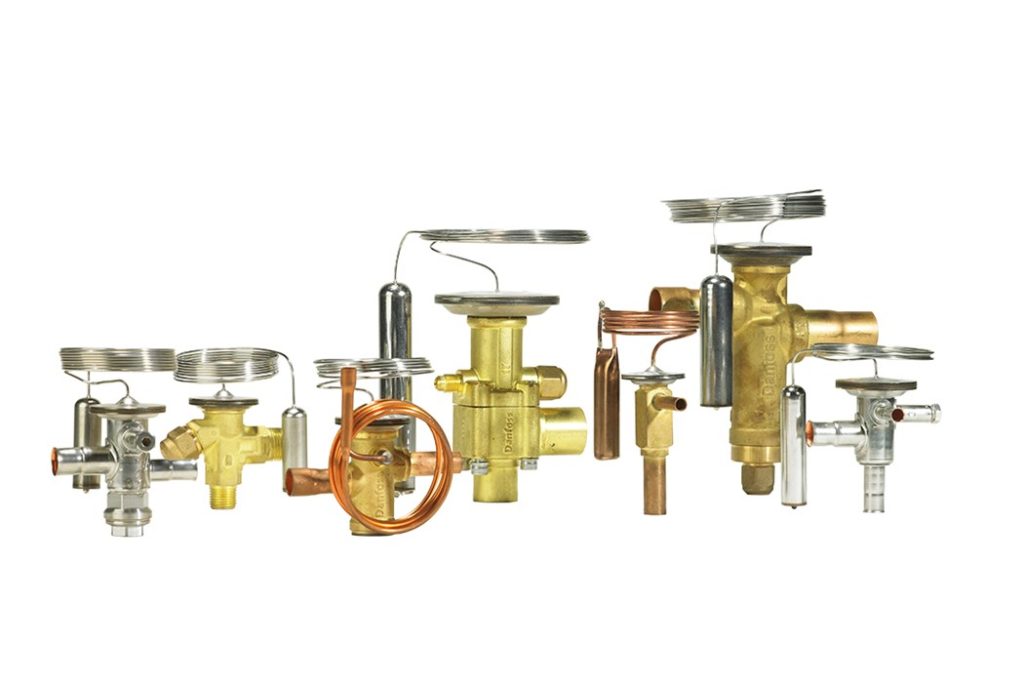The expansion valve removes pressure from the liquid refrigerant to allow expansion or change of state from a liquid to a vapor in the evaporator.
The high-pressure liquid refrigerant entering the expansion valve is quite warm. This may be verified by feeling the liquid line at its connection to the expansion valve. The liquid refrigerant leaving the expansion valve is quite cold. The orifice within the valve does not remove heat, but only reduces pressure. Heat molecules contained in the liquid refrigerant are thus allowed to spread as the refrigerant moves out of the orifice. Under a greatly reduced pressure the liquid refrigerant is at its coldest as it leaves the expansion valve and enters the evaporator.
Pressures at the inlet and outlet of the expansion valve will closely approximate gauge pressures at the inlet and outlet of the compressor in most systems. The similarity of pressures is caused by the closeness of the components to each other. The slight variation in pressure readings of a very few pounds is due to resistance, causing a pressure drop in the lines and coils of the evaporator and condenser.
Two types of valves are used on machine air conditioning systems:
- Internally-equalized valve – most common
- Externally-equalized valve special control

Source & credit :- SWTC
